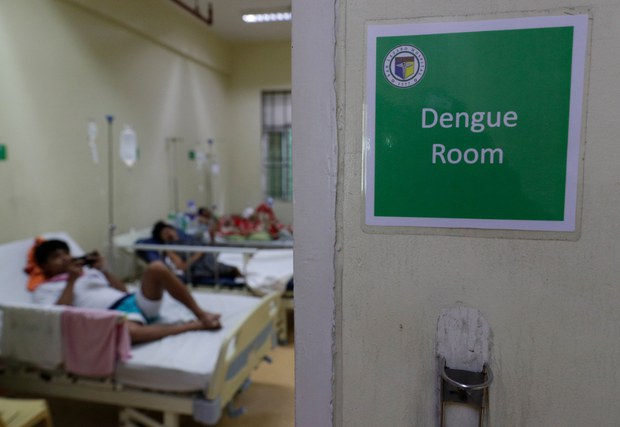Philippines: Dengue Death Toll Tops 1,000
2019.09.11
Cagayan de Oro, Philippines
 Patients are treated in the dengue room at the San Lazaro government hospital in Manila, Aug. 7, 2019.
Patients are treated in the dengue room at the San Lazaro government hospital in Manila, Aug. 7, 2019.
The death toll from a dengue epidemic has surpassed 1,000 in the Philippines, health officials said Wednesday as they struggled to contain the spread of the mosquito-borne disease.
Health Undersecretary Rolando Enrique Domingo told reporters the number of infected patients across the country has reached 250,000, compared to 170,000 last month. He urged people to help prevent the spread of the virus that has killed 1,021 people.
“What we need is for the effort to go down to the village level,” Domingo said, referring to the national efforts to address the mosquito-borne disease. “We understand that sometimes it may be tiring, but the threat of dengue is continuous. We ask for a little more effort because as we can see there are still a lot of cases.”
Dengue fever and dengue hemorrhagic fever are acute viral infections that affect infants, young children and adults. It is transmitted by a bite from an Aedes aegypti mosquito infected with any one of the four dengue strains.
Warning signs of severe dengue occur three to seven days after the first symptoms and include severe abdominal pain, persistent vomiting, rapid breathing, bleeding gums, fatigue, restlessness and blood in vomit. Proper medical care is needed to avoid complications and risk of death.
Health officials early last month declared a nationwide dengue epidemic, putting in place efforts at stopping the spread of the disease. Still, the disease continues to affect communities, particularly in the south where health officials earlier dispatched field hospitals.
The International Federation of Red Cross and Red Crescent Societies said the overall dengue caseload and the death-toll in the Philippines were on the rise, and warned that more patients were expected in the coming month.
“This means that the hospitals or at least some of them will continue to require the dengue medical emergency unit support. Moreover, the country is experiencing the effects of a southwest monsoon,” the Red Cross said in statement. “This mixed with the typhoon season may further intensify flooding and lead to a spike in the number of mosquitoes, resulting in more dengue cases.”
Dengvaxia, manufactured by French firm Sanofi Pasteur, is the only dengue vaccine licensed globally, but it has been banned in the Philippine since December 2017. At least 14 Filipino children died after more than 800,000 were vaccinated with the drug between 2016 and 2017, Philippine health officials said.
The vaccine was administered to school children nationwide, but was banned after the deaths.
In 2018, a Sanofi regional director told a Philippine congressional panel the drug was safe for public use. Last month, health officials denied French drug maker Sanofi Pasteur’s appeal to lift the ban, citing the permanent revocation of the certificate of product registration for Dengavaxia was for its “continued failure to submit post-approval requirements.”
“Given that Dengvaxia is an innovative drug, the importance of complying with these post-marketing commitments is critical to public safety,” Health Secretary Francisco Duque said in a statement. “We assure the public that the (health department) has been working tirelessly in response to the nationwide dengue epidemic.”
Jeoffrey Maitem in Cotabato, Philippines, contributed to this report.







